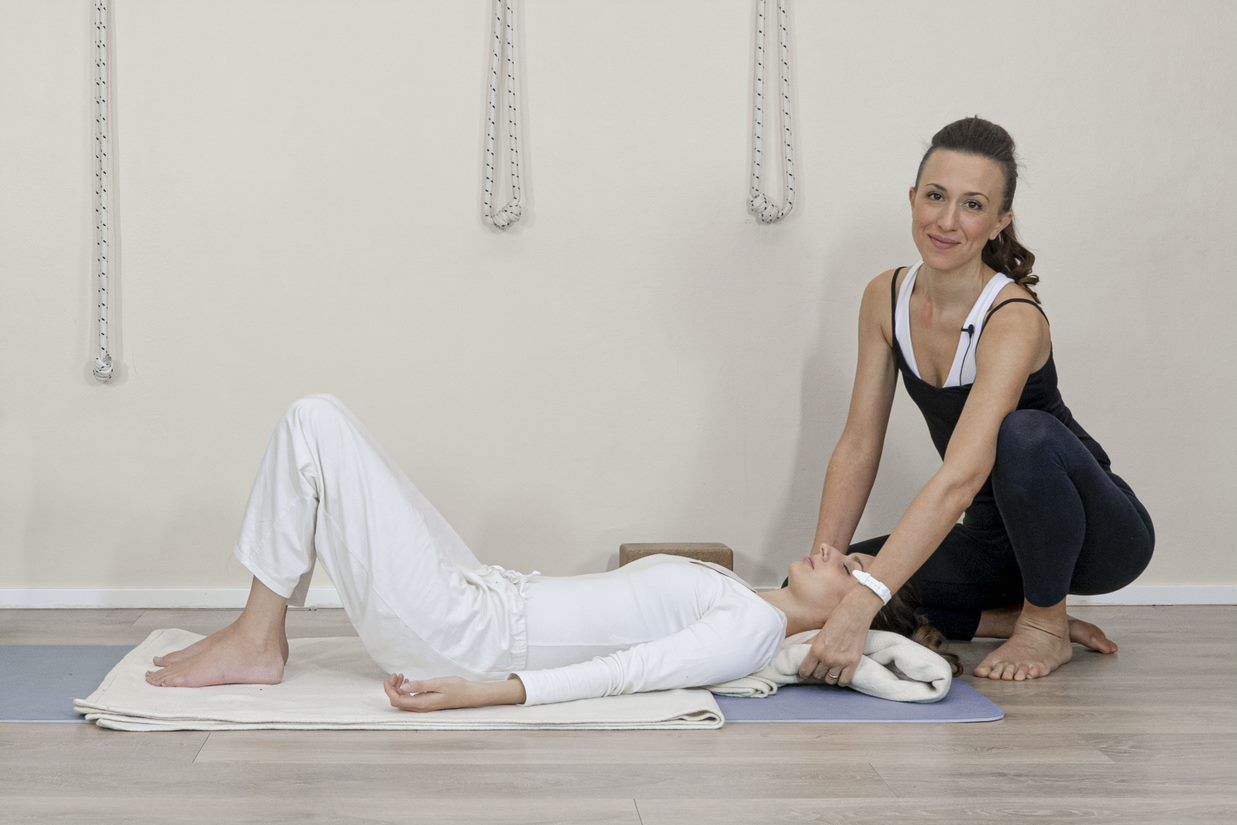What is restorative yoga?
Restorative yoga is described using the words gentle, supportive and therapeutic. Restorative yoga is, therefore, a restful practice.
Just as the name implies, this style of yoga aims at restoring your body to its parasympathetic nervous system function, thus bringing the body to rest, healing, and balance restoration.
Restorative yoga assists to elicit a relaxation response by holding yoga poses (Asanas) for a longer period of time using props such as blankets, blocks, and bolsters. This response can assist in achieving slower breathing, reducing blood pressure, and generating a calm feeling as well as increased well-being. The use of props for support makes it rather easy for many of the postures to be held without difficulty.
When the body goes into a state of relaxation, consciously the mind relaxes also and there’s a release of tension from the mind and the body. During a restorative yoga practice, you are required to be attentive to your breathing and be conscious of any form of sensation that may occur.

1. To carry out restorative yoga, find a neat and quiet place. Get a spot free from distractions where you can relax. You may prefer a place indoor or outdoor but make sure to choose a safe place and where there won’t be interruptions from loud or sudden sounds that might frighten you.
You might likely want to close your eyes while observing any of these poses, so get a place where you can do this without getting afraid. Take, for instance, a public park. This might definitely not be a good place to do restorative yoga as you won’t be able to relax fully there.
2. Assemble the necessary props. Restorative yoga should be a supported and comfortable experience that will enable you to attain a deeper sense of relaxation. There are quite a great number of yoga props to get this yoga done. Yoga props such as yoga mats and yoga blocks, sandbags, straps, eye bags towels, chairs, and pillows are very much beneficial during restorative yoga. You will also require several layers of blankets, towels, and eye pillows.
A thick blanket can be provided to lay on the floor with, coupled with pillows of different degrees of stability if yoga props are not available. Also, you can use rolled blankets and towels.
Most of these poses are being timed so you have to set a timer that will alert you when the time is exhausted. Ensure that your timer has a soothing tone, such that once it alerts, you wouldn’t find it surprising or jarring.
3. Turn on some relaxing music. You can get into a calm and restorative state by turning on some relaxing music. Classical or instrumental music works best as relaxing music. Meditation mixes can also be found through online services to achieve this purpose. Select slower kinds of music without lyrics and not too fast and complex kind of music.
4. Get comfortable. Start your restorative yoga session by getting a comfortable seat, fully supported using blankets and pillows. You may probably need a wrapped blanket around your shoulders and torso to provide you with extra warmth.
Normally, yogis will sit with their legs crossed but if you aren’t comfortable in this position, take another position that will soothe you.
The only relevant thing about how you sit is that you ensure your spine is straight & neutral, such that you can sit up straight without experiencing an ache on your spine. Ensure that your chest & heart are also directly above your pelvis.
Settle into the center or middle by moving your pelvis a little bit from left to the right and also from front to back. It will help you to get yourself aligned.
5. Connect with your breath. As you start your restorative yoga practice, try to clear your mind and maintain focus on your breath while breathing slowly & deeply. On every inhale, enlarge your belly & lift your chest. Then on each exhale tug your navel towards your spine to squeeze out the air.
To connect with your breath, meditating deeply is not as essential as people think. But you must sit for some minutes to establish a connection with your mind and body before commencing your restorative yoga practice.
Restorative yoga grants us access to reconnect to our parasympathetic nervous system and improve our capacity to go through stressful states to rest with more peace of mind. Restorative yoga helps us learn how to relax. The production of the stress hormones, cortisol & adrenaline can be reduced through restorative yoga. Restorative yoga is also responsible for an improvement in the immune system, reduction of muscle tension, and also assists with insomnia and a whole lot of other important benefits.


